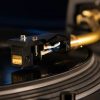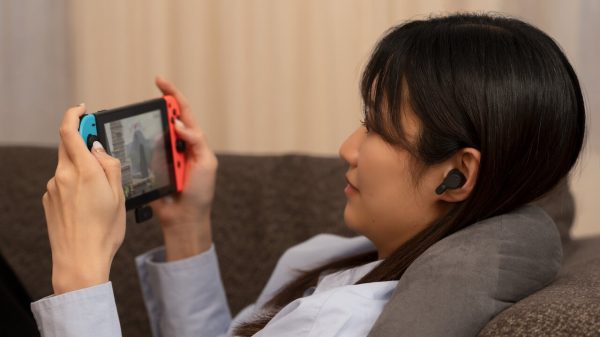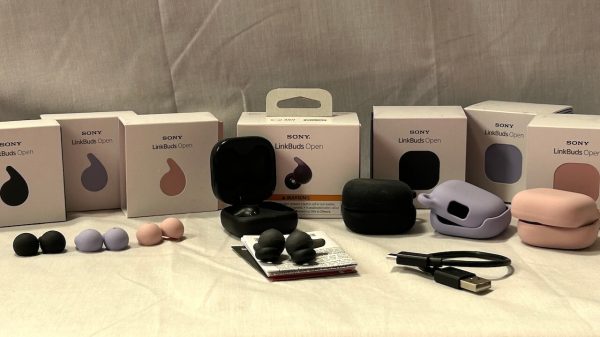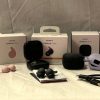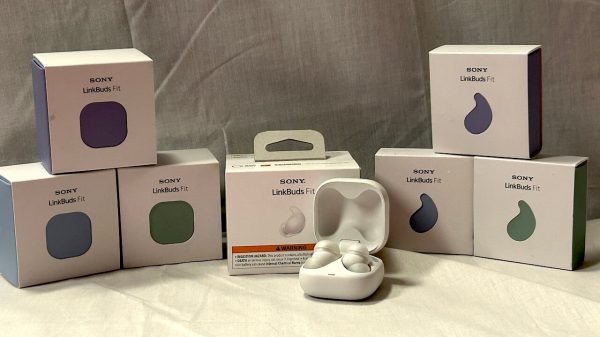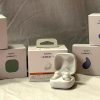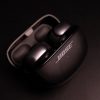More than one industry analyst has predicted that the global wireless headphone market is going to hit $27 billion within the next 5 years. That’s a staggering number for any consumer product but also not that surprising.
Products like the Jabra Elite 4 Active True Wireless Earbuds are proving to be very successful for brands that have the marketing angle figured out and solid distribution channels.
With billions of wireless devices in daily use around the globe, it’s a potential goldmine for brands like Apple, Sony, Philips, and Bose — but also a market that is very competitive as smaller brands like Jabra, Sennheiser (which is now under new ownership), Master & Dynamic, Grado, Klipsch, 1More, Skullcandy, and 30 others chip away with their products.
Wireless headphones and earphones have become a commodity and sadly a product that consumers are willing to throw away or replace if one breaks or goes missing.
Price is a major point of differentiation, along with longer battery life, ANC, and support for the latest Bluetooth codecs.
So where does that leave a brand like Jabra?
It wasn’t that long ago that I reviewed the Jabra Elite 3 and while it had some solid features, I felt it also had a few areas where improvement was possible. With that in mind, it made logical sense to me to see if the next model in the lineup addressed those shortcomings — enter the Jabra Elite 4 Active TWS Earbuds with Active Noise Cancellation (ANC).

The Elite lineup includes the Elite 3, Elite 4 Active, Elite 7 Active, and Elite 7 Pro models. The two “Active” models (4 and 7) are very similar in most respects, but differ when it comes to ANC and ambient modes where the 7 takes the lead and the 4 has more basic features.
For many of us, ANC isn’t entirely necessary for the gym and ambient listening isn’t needed either so the 4 offers potential savings.
The Jabra Elite 4 Active has a full IP57 rating. For those unfamiliar with the rating system, the first digit represents particulate incursion, so the 5 rating means these have some protection from airborne dust and dirt.
The second digit is water repellency, with 5 meaning withstands water jet but not submersion and 7 represents surviving submersion in up to one meter of water for up to 30 minutes.
While it is still not recommended that you swim with these earpieces in, short dips in the pool shouldn’t hurt them.

The Skinny
The supplied kit is par for the course in 2022; a pair of TWS with the earpieces, 3 sizes of tips, the charging case, and an USB Type-A to Type-C cable. My constant gripe on the charging cables is they are always about 6″ or less in length and basically useless.
I’d rather see them either lengthened to 12″+ or omitted altogether as it is kidding oneself to think including a 4″ cable is of much use to anyone.
Construction is entirely of impact resistant plastic which makes the Jabra Elite 4 Active rather lightweight which is great for comfort and carrying them in your pocket.
The earpieces are on the small side with an easy fit that places them almost entirely in the ear but the tip insertion depth is still fairly shallow. The entire faceplate is a control panel but it does require pressing rather firmly to activate as the controls are not touch sensors.
This can be a bit uncomfortable with the earpieces inserted so I opted for the controls in the app instead.
The drivers are the same 6mm dynamic driver used in the Elite 3 according to Jabra’s documentation but beyond that, Jabra is fairly tight-lipped about the specs. They do list the frequency response as 20 – 20kHz in music mode but limited to 100 – 8000Hz in speech mode.

There are four microphones hidden in the body of the Elite 4 Active for speech and ANC functions.
There is an ambient mode named “Hearthrough” in addition to the customizable ANC. When you first open the app, you are presented with the option to tune ANC to your liking and it does help as I discovered with the overall sonic presentation. The ability to turn down the ANC to a level that is a good balance between noise cancellation and sound quality is an excellent feature.



Connectivity is handled by a Qualcomm chipset that supports aptX and SBC but does not support AAC or any of the high bit rate (aptX HD, LDAC) codecs. I can understand the lack of LDAC due to licensing fees but if including aptX why not include the HD version? The absence of AAC support is also strange considering how many tens of millions of consumers are walking around with Apple wireless devices.
Battery life is good with roughly 7 hours of listening time on a charge and 2.5 charges provided by the case if ANC is not in use. Using ANC drops the time to roughly 5 hours when set on its highest mode and varies with the degree of ANC in use.
The Elite 4 Active also offers “mono” mode so the user can use one earbud and charge the other for those days with too many meetings. The earpieces do not pause when removed so remember to pause the music to save battery life.

Sound Quality
The sonic signature is a typical “V” tuning with a fairly assertive sub-bass lift and a big treble push and was very similar to the Elite 3 I reviewed earlier. I suspect that the tuning is the exact same for both having looked at the frequency response for both; it would appear that only the electronics are different between the two models as the Elite 4 Active sports the exact same curve as the Elite 3 when its ANC is disabled.
Jabra’s customers are generally active people; both gym users and runners and I’d venture to say that the presentation and tonal balance are tilted to emphasize the low end and energy of rock and pop music.
The Elite 4 Active are not as kind to orchestral works as the midrange is slightly recessed and strings lack enough energy to be entirely realistic. Female vocals are pushed forward in the mix and have decent body, but I found male vocals to be not as prevalent due to the tuning.



The EQ Function in the app allows for tuning to your desired signature but be aware that boosting the bass also muddies the sound far too much. The two most useful settings in the EQ for me personally were “neutral” and “speech.” Neutral is the best setting for music listening while speech is better for phone calls as it cuts both highs and lows to accentuate only the vocal range.
Conclusion
The Jabra Elite 4 Active is definitely an upgrade on the Elite 3; I struggled with the Elite 3 as it offered some good features — but some of the drawbacks kept it from being an easy recommendation.
The Elite 4 Active is a bit easier to recommend even though it suffers from some similar quirks; unlike the Elite 3, it does work really well in the gym or when running and I think that gives it some added value.

I still think the lack of AAC support hurts it as Apple users will likely want to look elsewhere, but for those where aptX is an option, the connectivity worked very well and with nearly 8 hours of battery life on a charge, one could use these at the gym for an hour on a daily basis and only need to charge the case once every couple of weeks. That’s rather efficient battery life.
In addition Jabra’s office pedigree shows through and the Elite 4 Active makes an excellent IEM with ANC when engaged in phone or Zoom meetings at work. I can see it being quite popular for those who want a single wireless IEM for the office, gym, and music listening on the go.
Where to buy: $119 at jabra.com | Amazon


